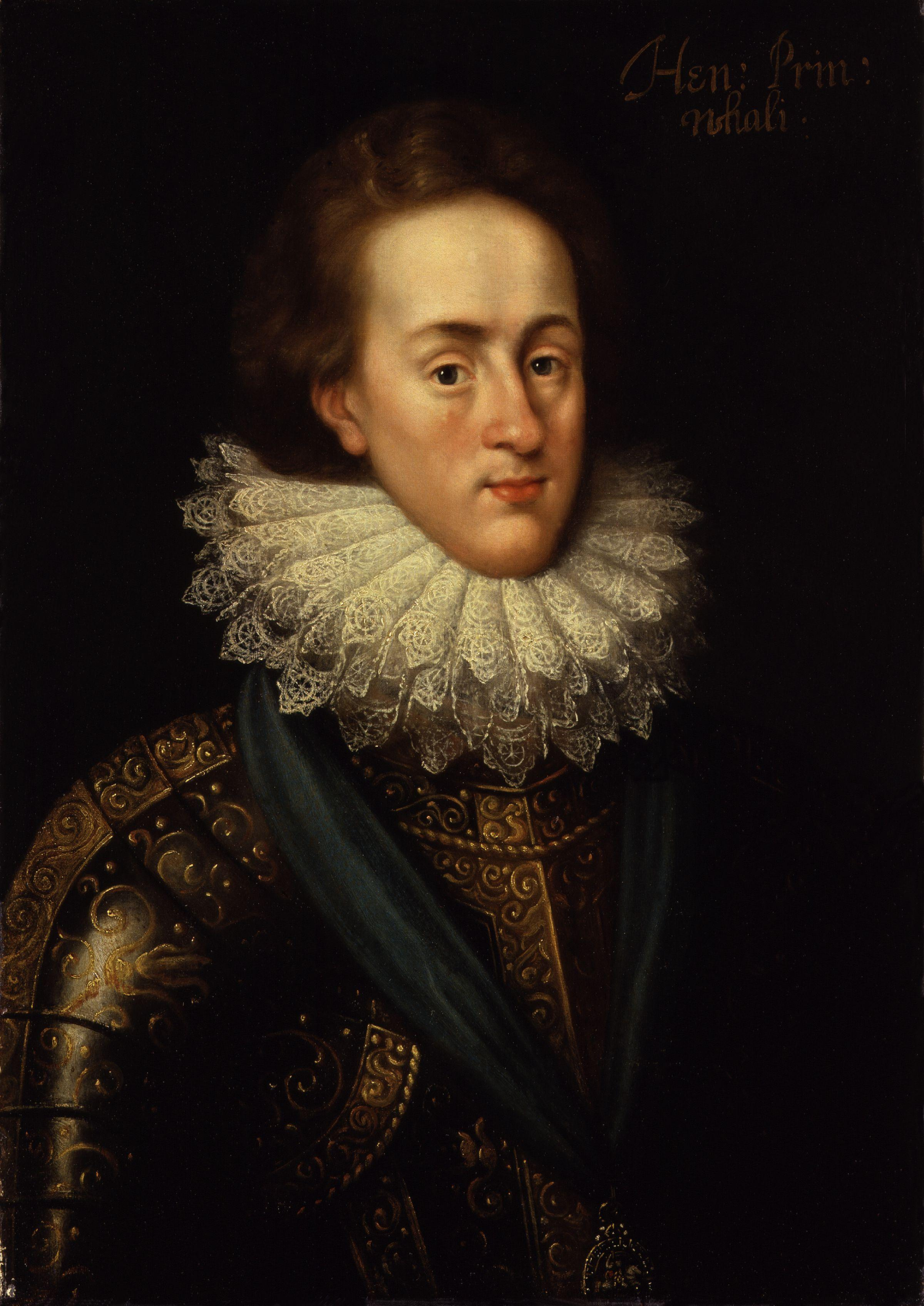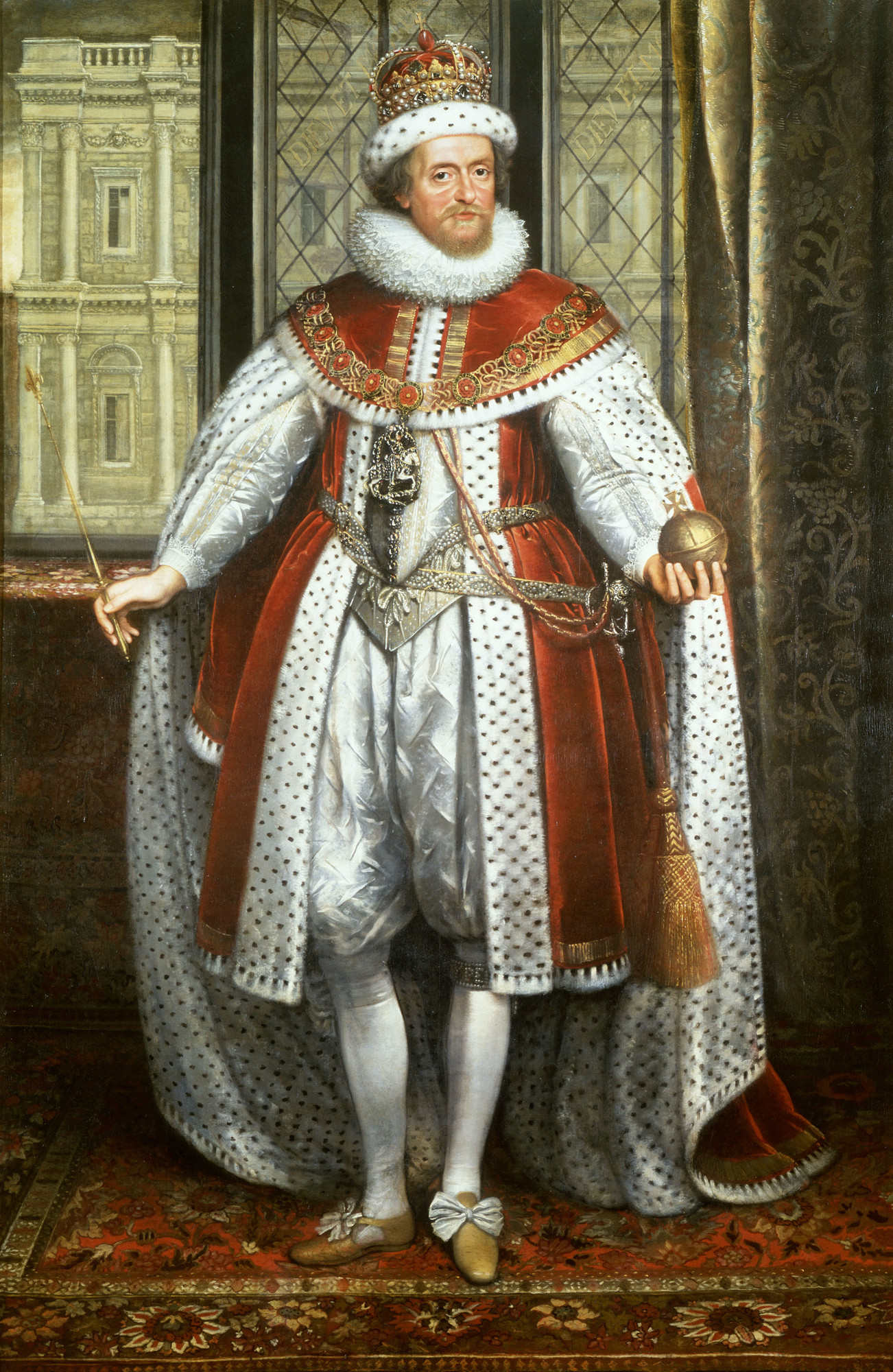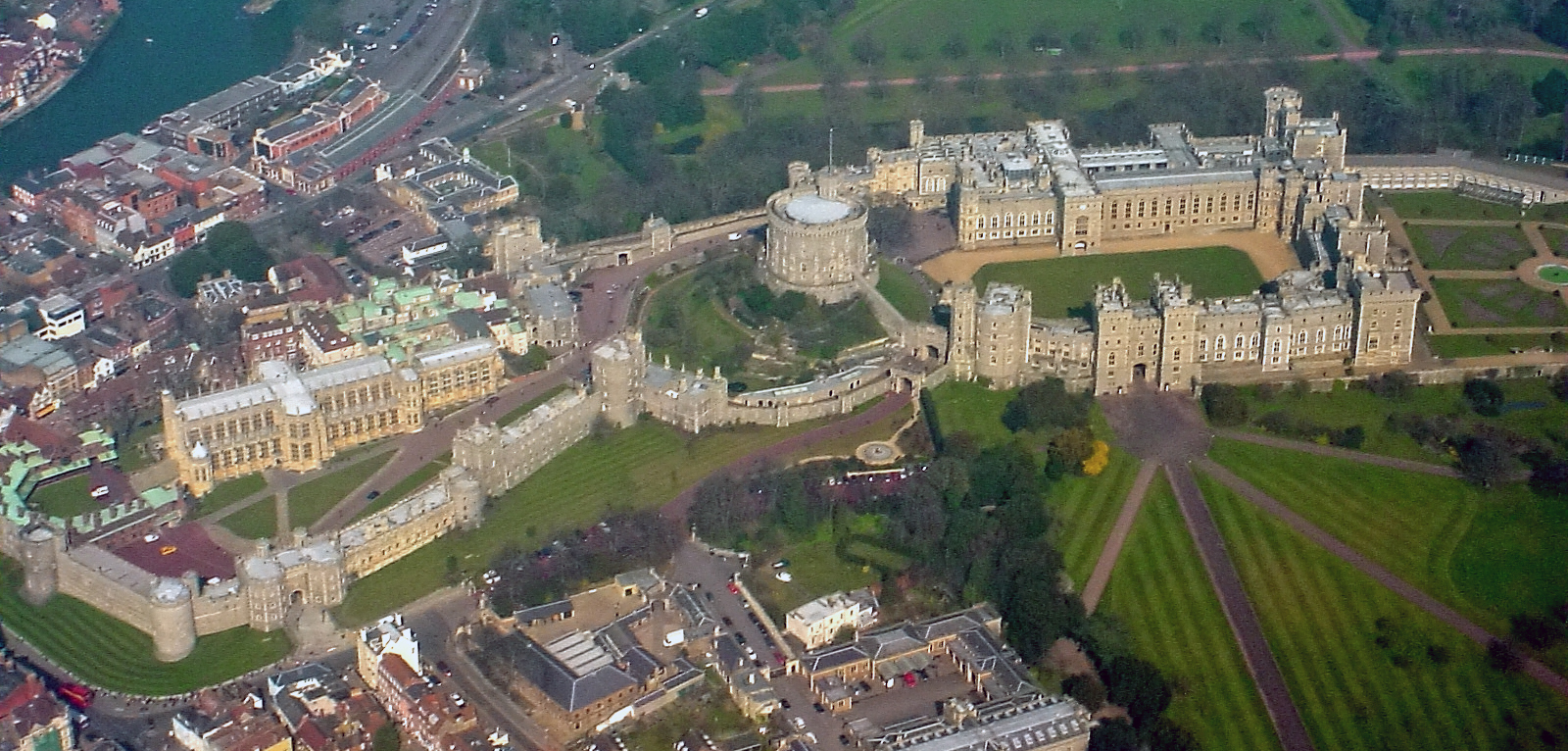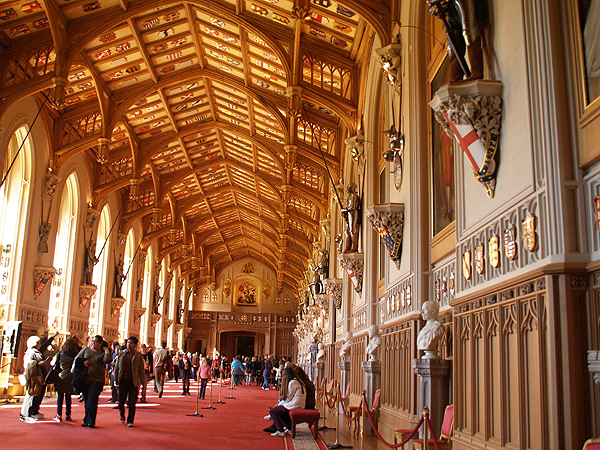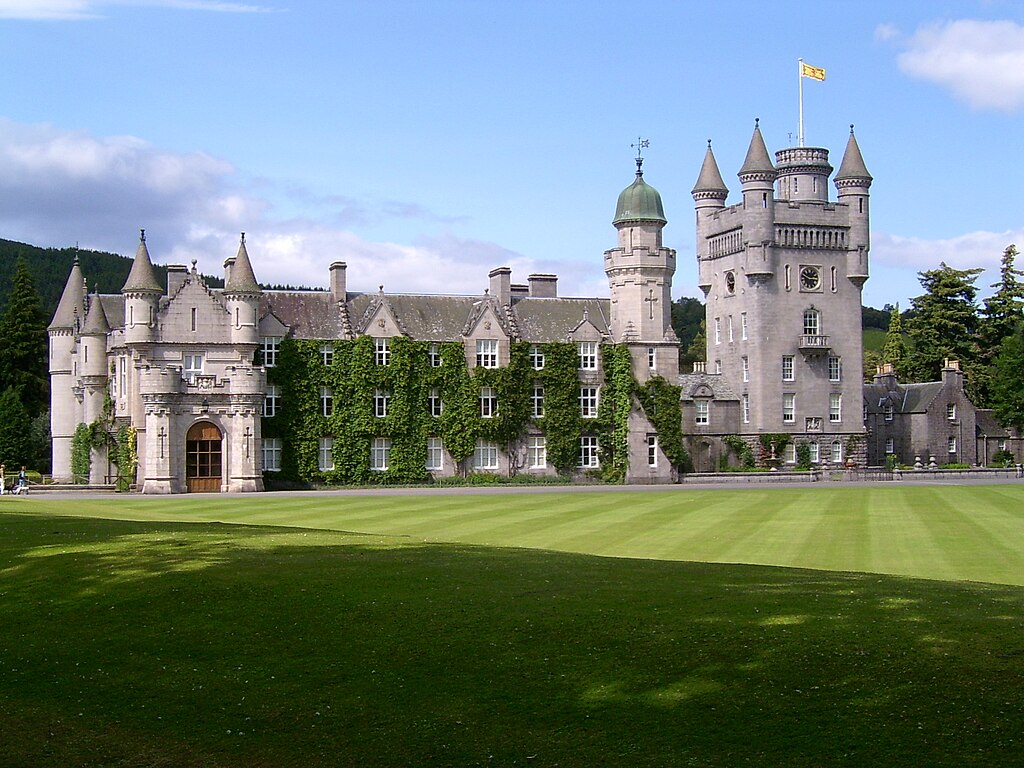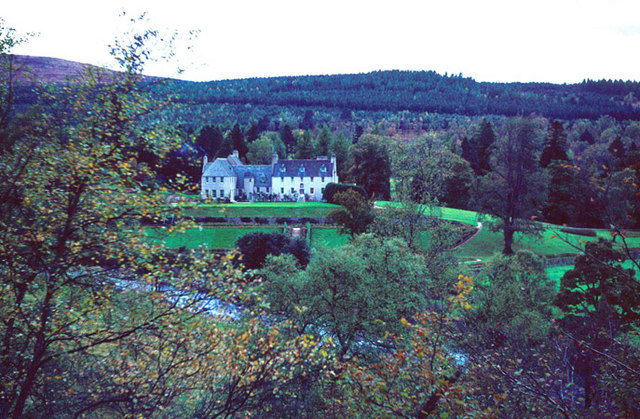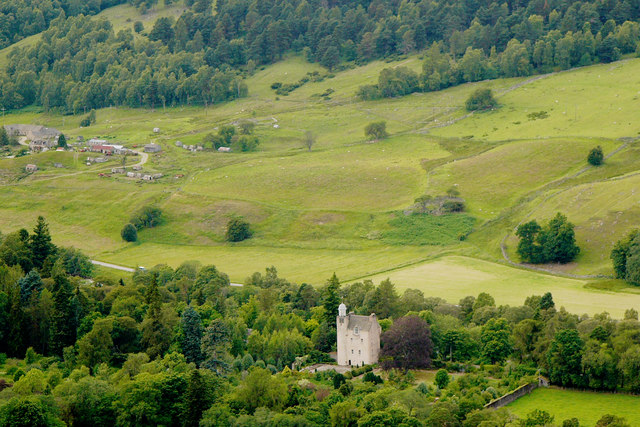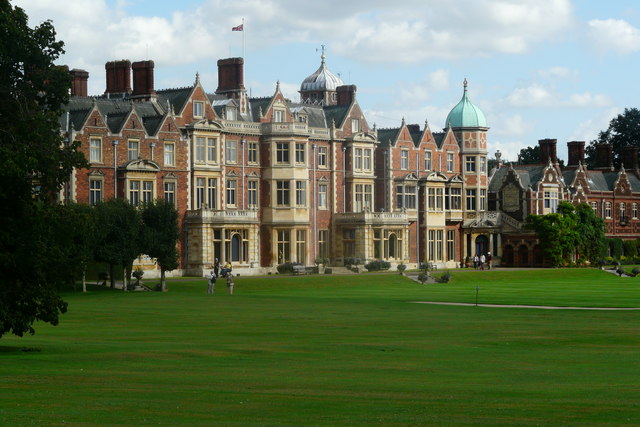by Susan Flantzer © Unofficial Royalty 2015

King Henry VIII of England; Credit – Wikipedia
King Henry VIII of England is known for his six wives, but he also makes the list for the top ten longest-reigning British monarchs coming in at number nine with a reign of 37 years, 281 days. He became king in 1509, two months short of his 18th birthday, and reigned until his death at the age of 55 in 1547. Henry and his siblings represented the merging of the Lancasters and the Yorks who fought for power during the Wars of the Roses. By 1483, Henry VIII’s father, Henry Tudor, was the senior male Lancastrian claimant. Henry VIII’s mother, Elizabeth of York, was the eldest daughter of the Yorkist King Edward IV, the elder brother of King Richard III. In 1485, Henry Tudor won the throne when his forces defeated the forces of King Richard III at the Battle of Bosworth Field, becoming king by the right of conquest. The new dynasty was the House of Tudor descended in the male line from the Tudors of Penmynydd in Wales. Upon his marriage to Elizabeth of York, Henry VII adopted the Tudor Rose combining the white rose of the House of York and the red rose of the House of Lancaster.
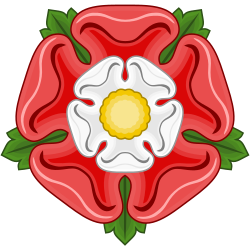
The Tudor Rose; Credit – Wikipedia

Henry VIII’s parents, Elizabeth of York and King Henry VIII of England; Credit – Wikipedia
Henry was born at Greenwich Palace on June 28, 1491, the third child and the second son of his parents. He had six siblings:
- Arthur, Prince of Wales (1486 – 1502), married Catherine of Aragon, no issue
- Margaret Tudor (1489 – 1541), married (1) James IV, King of Scots, had issue including James V, King of Scots, father of Mary, Queen of Scots (2) Archibald Douglas, 6th Earl of Angus, had one daughter Lady Margaret Douglas who was the mother of Henry, Lord Darnley, the second husband of Mary, Queen of Scots and father of Mary’s only child James VI, King of Scots/James I, King of England (3) Henry Stewart, 1st Lord Methven, no issue
- Elizabeth Tudor (1492 – 1495), died young
- Mary Tudor (1496 – 1533), married (1) Louis XII, King of France, no issue (2) Charles Brandon, 1st Duke of Suffolk, had issue, grandmother of Lady Jane Grey
- Edmund Tudor, Duke of Somerset (1499 – 1500), died young
- Katherine Tudor (born and died 1503), died shortly after birth, her mother died of childbirth complications

Henry weeping over the death of his mother, along with his sisters Mary and Margaret; Credit – Wikipedia
The heir to the throne, Arthur, Prince of Wales had his own household at Ludlow Castle in the Marches of Wales. Henry and his other siblings were raised at Eltham Palace at Greenwich in London. Henry’s first tutor was the English poet John Skelton who taught his pupil Latin, ancient authors, history, music, and poetry. Henry continued to receive a Renaissance humanist education with tutors William Hune and Giles Duwe. Henry was fluent in French and Latin, played several instruments, and composed religious and secular songs.
At the age of three, Henry was created Duke of York and a year later he was appointed to the Order of the Garter. On November 14, 1501, ten-year-old Henry led Catherine of Aragon (the youngest daughter of Queen Isabella I of Castile and King Ferdinand II of Aragon), his brother Arthur’s bride, to the altar at Old St. Paul’s Cathedral. Five months later, Arthur died from “a malign vapor which proceeded from the air” and Henry was the heir to the throne. He immediately became Duke of Cornwall and was created Prince of Wales and Earl of Chester on February 18, 1503.
King Henry VII did not want to lose Catherine of Aragon’s dowry or the alliance he had made with Spain, so he offered Henry, who was five years younger than Catherine, to be her husband. Several problems with negotiations made it doubtful that the marriage would ever take place. With little money, Catherine lived as a virtual prisoner at Durham House in London from 1502 – 1509. King Henry VII died on April 21, 1509, and 17-year-old Henry succeeded him.

Henry VIII in 1509; Credit – Wikipedia
Henry VIII’s Lord Chancellors: The Lord Chancellor was the King’s chief adviser.
- William Warham, Archbishop of Canterbury: married and crowned Henry VIII and Catherine of Aragon
- Thomas Wolsey, Cardinal Archbishop of York: started as Henry’s almoner, but within a few years became powerful in all matters of state, lost all his government titles after failing to negotiate an annulment of Henry’s marriage to Catherine of Aragon, died on his way to London to answer charges of treason
- Sir Thomas More: lawyer, social philosopher, author, statesman, and Renaissance humanist; opposed the Protestant Reformation, tried for treason for not taking the Oath of Supremacy, was convicted and beheaded, canonized as a Roman Catholic saint
- Sir Thomas Audley, later Baron Audley of Walden: barrister and judge, supported the King’s divorce from Catherine and the marriage with Anne Boleyn, presided at the trials of Bishop John Fisher and Sir Thomas More; participated in Anne Boleyn’s trial, recommended to Parliament the new Act of Succession, which made Jane Seymour’s issue legitimate
- Thomas Wriothesley, 1st Earl of Southampton: diplomat, one of the King’s personal secretaries, personally tortured the reformer Protestant Anne Askew on the rack, one of the executors of Henry’s will
- William Paulet, 1st Marquess of Winchester: a statesman who held many offices, one of the judges for the trials of Bishop John Fisher, Sir Thomas More, and the alleged lovers of Anne Boleyn
Other Important People During Henry VIII’s Reign
- Charles Brandon, 1st Duke of Suffolk: boyhood friend of Henry VIII, second husband of Henry’s sister Mary, held several positions in the royal household
- Thomas Cranmer, Archbishop of Canterbury: a leader of the English Reformation, helped build the case for the annulment of Henry’s marriage to Catherine of Aragon, wrote and compiled the first two editions of the Book of Common Prayer, burned at the stake for heresy during the reign of Henry’s Catholic daughter Mary I
- Thomas Cromwell: lawyer, statesman, and chief minister to Henry VIII from 1532 – 1540, advocate of the English Reformation, helped to engineer an annulment of the king’s marriage to Catherine of Aragon, played a prominent role in the downfall of Anne Boleyn, fell from power after arranging the King’s unsuccessful marriage to Anne of Cleves, executed for treason and heresy
- Thomas Howard, 3rd Duke of Norfolk: politician, played a major role in arranging the marriages of his nieces Anne Boleyn and Catherine Howard to Henry VIII, was stripped of the dukedom and imprisoned in the Tower, avoiding execution when Henry VIII died
- Sir Richard Rich: lawyer, Solicitor General, a major participant in the Dissolution of the Monasteries, helped prepare the cases against Bishop John Fisher and Sir Thomas More, played a major role in the downfall of Thomas Cromwell, was Lord Chancellor under King Edward VI
Wife One: Catherine of Aragon

Catherine of Aragon, Queen of England; Credit – Wikipedia
One of Henry’s first acts as king was to plan to marry his widowed sister-in-law. Marriage to his brother’s widow depended on the Pope granting a dispensation because according to canon law, marriage to a brother’s widow was forbidden. Catherine testified that her marriage to Arthur was never consummated, and according to canon law, the marriage was not valid. On June 11, 1509, King Henry VIII and Catherine of Aragon were privately married at the Grey Friars’ Church in Greenwich. The couple’s coronation took place at Westminster Abbey on June 23, 1509.

16th-century woodcut of the coronation of Henry VIII and Catherine of Aragon showing their heraldic badges, the Tudor Rose and the Pomegranate of Granada; Credit – Wikipedia
Catherine was pregnant six times and had only one surviving child Mary I, Queen of England.
- Unnamed daughter and son (January 31, 1510), stillborn
- Henry, Duke of Cornwall (January 1, 1511 – February 22, 1511)
- Henry, Duke of Cornwall (November 1513), lived for a few hours.
- Henry, Duke of Cornwall (January 5, 1515), stillborn
- Mary I, Queen of England (February 18, 1516 – November 17, 1558), married King Philip II of Spain, no issue
- Unnamed daughter (November 10, 1518 – November 17, 1518)

Henry VIII’s and Catherine of Aragon’s daughter Mary; Credit – Wikipedia
Henry and Catherine’s marriage was initially happy, but Henry was desperate for a male heir. By the mid-1520s, it became obvious that Catherine, who was five years older than Henry, was unlikely to have any more children. Henry became convinced that his marriage was cursed because Leviticus 20:21 says, “And if a man shall take his brother’s wife, it is an unclean thing: he hath uncovered his brother’s nakedness; they shall be childless.” Around the same time, Henry became enamored of Anne Boleyn, a lady-in-waiting to Catherine, and Henry began pursuing her.
Henry instructed Cardinal Wolsey to start negotiations with the Vatican to have his marriage to Catherine annulled. Catherine put up a valiant fight to save her marriage and was supported by her nephew Charles V, Holy Roman Emperor. After several long years of negotiations, Cardinal Wolsey failed to obtain the annulment incurring the anger of Anne Boleyn, who brought about Wolsey’s dismissal as Chancellor. A far more reaching consequence was Henry’s break with Rome which was to lead to the Reformation in England and the establishment of the Church of England. In 1533, Henry nominated Thomas Cranmer as Archbishop of Canterbury, and in May 1533, Cranmer declared that because Henry and Catherine’s marriage was against the law of God, it was null and void. Catherine was banished from the court and Henry refused her the right to any title but “Dowager Princess of Wales” in recognition of her position as his brother’s widow. She was forbidden to see her daughter and died at Kimbolton Castle on January 7, 1536.
Wife Two: Anne Boleyn

Anne Boleyn, Queen of England; Credit – Wikipedia
Anne Boleyn was the daughter of Sir Thomas Boleyn and Lady Elizabeth Howard, daughter of Thomas Howard, 2nd Duke of Norfolk. Lady Elizabeth’s brother was the Tudor courtier, Thomas Howard, 3rd Duke of Norfolk. Anne’s birth date and birthplace are uncertain, but Anne grew up with her siblings at Hever Castle. She served at the French court as a maid of honor to Mary Tudor, the wife of King Louis XII of France, and Claude of France, daughter of Louis XII and wife of his successor François I, King of France. Upon her return to England, she was appointed a maid of honor to Catherine of Aragon.
The lively and vivacious Anne soon attracted admirers at the English court including King Henry VIII. As stated above, Henry was desperate for a male heir and thought Anne could give him one. Anne refused to become Henry’s mistress as her sister Mary had. However, she continued to flirt with him and entered into an amorous correspondence with him. Meanwhile, Henry set into action the machinations that would annul his marriage to Catherine of Aragon. When Henry secretly married Anne on January 25, 1533, at the Palace of Westminster, she was already pregnant with her first child. On May 25, 1533, Thomas Cranmer declared Henry and Catherine’s marriage null and void and five days later, he declared Henry and Anne’s marriage valid. Anne was crowned at Westminster Abbey on June 1, 1533.
Anne was pregnant three times but only gave birth to one live child.
- Elizabeth I, Queen of England (September 7, 1533 – March 24, 1603), unmarried, no issue
- Stillborn son (August/September 1534)
- Miscarried son (January 29, 1536)

Henry VIII and Anne Boleyn’s daughter Elizabeth; Credit – Wikipedia
The loss of the last son sealed Anne’s fate. Henry was determined to be rid of her, and Thomas Cromwell engineered her fall and execution. Many historians believe that the case charging Anne with adultery with her brother George Boleyn and four other men was completely fabricated. Anne was arrested on May 2, 1536, and taken to the Tower of London. On May 14, 1536, Thomas Cranmer declared her marriage to Henry was null and void. Her trial occurred at the Tower on May 15, 1536, and she was found guilty of adultery, incest, and high treason. On May 18, 1536, Anne’s brother and the four other men were executed. Anne was beheaded on Tower Green on May 19, 1536, by a headman from Calais, France who used a sword rather than an axe.
Wife Three: Jane Seymour
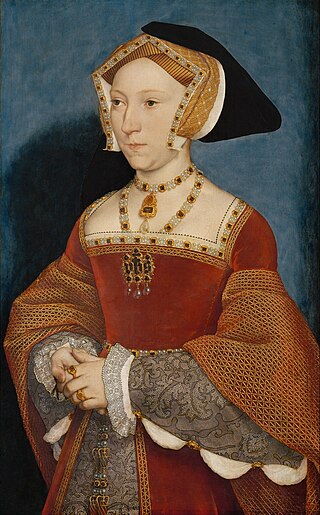
Jane Seymour, Queen of England; Credit – Wikipedia
Sometime in early 1536, Henry VIII began to show an interest in Jane Seymour, maid of honor to both Catherine of Aragon and Anne Boleyn. Daughter of Sir John Seymour and Margery Wentworth, Jane was born around 1508 into a prominent gentry family. During the period of Anne Boleyn’s arrest, trial, and execution, Jane left the court and stayed at the family home, Wolf Hall. As soon as Henry heard the guns at the Tower of London announcing Anne Boleyn’s death, he left for Wolf Hall. Jane and Henry were betrothed the next day and on May 30, 1536, they were married by Thomas Cranmer, Archbishop of Canterbury in a private ceremony held in the Queen’s Closet at Whitehall Palace. Early in 1537, Jane became pregnant and on October 12, 1537, she gave Henry his much-longed-for son.

Henry VIII and Jane Seymour’s son Edward in 1539; Credit – Wikipedia
The King’s joy was short-lived. On October 17, 1537, Jane’s condition deteriorated and she was given the last rites. She died at Hampton Court Palace on October 24, 1537, most likely from puerperal fever or childbed fever, a bacterial infection.
Fourth Wife: Anne of Cleves

Abbe of Cleves, Queen of England; Credit – Wikipedia
After Jane’s death, Henry’s ambassadors to other courts were instructed to make inquiries about a possible fourth bride. Henry remained a widower for over two years and his fourth marriage was to prove the shortest of his six marriages. Anne of Cleves was born in 1515 in Düsseldorf, now in Germany. The Duchy of Cleves was a state of the Holy Roman Empire, and encompassed parts of present-day Germany and the Netherlands. Anne was the daughter of Johann III, Duke of Cleves and Maria of Jülich-Berg. Anne’s brother Wilhelm was the reigning Duke of Cleves. After seeing Hans Holbein’s portrait of Anne (above) and being urged on by his chief minister Thomas Cromwell, Henry agreed to the marriage.
When Henry met Anne, he said, “She is nothing so fair as she hath been reported.” Henry urged Cromwell to find a legal way to avoid the marriage but, by this point, doing so was impossible. Henry turned on Cromwell as did Cromwell’s enemies, leading to his downfall. Thomas Cromwell was arrested, charged with treason and heresy, and executed on July 28, 1540.
Henry went forward with the wedding on January 6, 1540, at the Palace of Placentia in Greenwich, London by Thomas Cranmer, Archbishop of Canterbury. Henry confided to Cromwell that he had not consummated the marriage, saying, “I liked her before not well, but now I like her much worse.” On July 9, 1540, the marriage was annulled on the grounds of non-consummation. Anne received a generous settlement, including Richmond Palace and the Boleyns’ former home Hever Castle, and was referred to as “the King’s Beloved Sister.” She was invited to court and was given precedence over all English women except the King’s wife and daughters.
Anne was the longest surviving of all Henry VIII’s wives. She survived long enough to see the coronation of Henry’s daughter Mary I. Anne died on July 16, 1557, two months before her forty-second birthday, and was buried at Westminster Abbey.
Fifth Wife: Catherine Howard

Catherine Howard, Queen of England; Credit – Wikipedia
Catherine Howard was born in about 1520, the daughter of Lord Edmund Howard and Joyce Culpepper. As the mother of Anne Boleyn, Catherine’s father was the child of Thomas Howard, 2nd Duke of Norfolk. Therefore Catherine was the first cousin of Anne Boleyn and the niece of Thomas Howard, 3rd Duke of Norfolk. After a rather lax upbringing in the household of her grandmother, the Dowager Duchess of Norfolk, Catherine’s uncle, the 3rd Duke of Norfolk, found a place for her in the household of Henry’s fourth wife Anne of Cleves.
Being was disinterested in Anne of Cleves, Catherine quickly caught Henry VIII’s eye. Catherine, well aware of the King’s interest, set out to captivate him. Her relatives encouraged her scheming and soon the King was showering favors upon Catherine. On the day after the annulment of his marriage to Anne of Cleves, Henry was urged by his council, headed by Catherine’s uncle, to marry again “for the comfort of the realm.” Henry and Catherine were married at Hampton Court Palace on July 28, 1540.
For a while, Henry’s marriage seemed to rejuvenate him. However, young Catherine found no joy in a husband who was old, physically gross, and repugnant. Catherine began affairs with Francis Dereham and Thomas Culpepper, two young men whom she had affairs with while in the Dowager Duchess of Norfolk’s household. Jane Boleyn, one of Catherine’s ladies-in-waiting and the widow of George Boleyn, executed for supposedly having an affair with his sister Anne Boleyn, aided and abetted Catherine in these affairs. Jane had testified, most likely falsely, against her husband and sister-in-law. An informer told the council about Catherine’s affairs.
Catherine was arrested and imprisoned at Syon Abbey where she remained throughout the winter of 1541 – 1542. Francis Dereham and Thomas Culpepper were executed on December 10, 1541. Catherine was taken to the Tower of London on February 10, 1542, and was beheaded there, along with Jane Boleyn, on February 13, 1542.
Sixth Wife: Catherine Parr

Catherine Parr, Queen of England; Credit – Wikipedia
King Henry VIII now required a nurse rather than a wife. He had become obese and needed to be moved around with the help of mechanical devices. He was covered with painful, pus-filled boils and probably suffered from gout. His obesity and other medical problems can be traced to the jousting accident in 1536, in which he suffered a leg wound that never healed. The jousting accident is believed to have caused Henry’s mood swings, which may have had a dramatic effect on his personality and temperament. Upon hearing good reports about the twice-widowed Catherine, Lady Latimer (born Catherine Parr) who cared for her elderly second husband John Neville, 3rd Baron Latimer, Henry married her on July 12, 1543, at Hampton Court Palace. Catherine proved to be a good nurse to Henry and a kind stepmother to his three children. She was influential in Henry’s passing of the Third Succession Act in 1543 which restored his daughters, Mary and Elizabeth, to the line of succession to the throne.
Catherine’s religious views were reform Protestant, in the sense of the definition of the word Protestant today. Her religious views incited a pro-Catholic/anti-Reform Protestant faction led by Stephen Gardiner, Bishop of Winchester and Thomas Wriothesley, Lord Chancellor, to bring a charge of heresy against her in 1546. Catherine found out about this and eloquently pleaded her case successfully to Henry.
After Henry died in 1547, Catherine married Thomas Seymour, uncle of King Edward VI. In August of 1548, Catherine and Seymour had a daughter, but tragically Catherine died on September 5, 1548, of puerperal fever (childbed fever). Her daughter appears to have died young.
Illegitimate Son
King Henry VIII acknowledged only one illegitimate child. His mother was Henry’s mistress Elizabeth Blount.
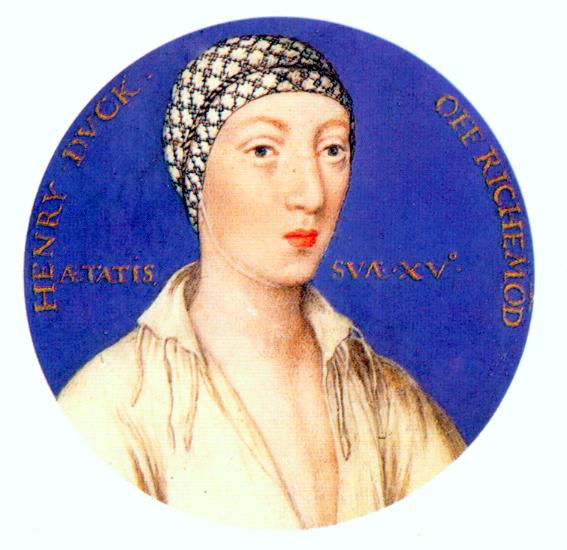
Henry Fitzroy; Credit – Wikipedia
Some Events of Henry VIII’s Reign

The meeting of Francis I and Henry VIII at the Field of the Cloth of Gold in 1520
- Publication of Defense of the Seven Sacraments, 1521: written by Henry in response to Martin Luther’s attack on indulgences
- Fidei Defensor (Defender of the Faith), 1521: Pope Leo X rewards Henry for writing Defense of the Seven Sacraments with the title Fidei Defensor (Defender of the Faith); revoked following the king’s break with the Catholic Church in the 1530s, but re-awarded to his heir by the English Parliament
- First Succession Act, 1533: makes the yet unborn Princess Elizabeth, daughter of King Henry VIII by Anne Boleyn, Henry’s heir and makes Princess Mary, the King’s daughter by Catherine of Aragon, a bastard
- Act of Supremacy, 1534: Henry is declared the supreme head of the Church of England
- Treasons Act, 1534: made it high treason, punishable by death, to refuse the Oath of Supremacy
- Dissolution of the Lesser Monasteries Act, 1536: provided for administrative and legal processes between 1536 and 1541 by which Henry VIII disbanded Catholic monasteries, priories, convents, and friaries in England, Wales, and Ireland, appropriated their income, disposed of their assets, and provided for their former members and functions
- Second Succession Act, 1536: declared Henry’s children by Jane to be next in the line of succession and declared both Mary and Elizabeth illegitimate and excluded from the succession
- Rough Wooing (December 1543 – March 1551): conflict between Scotland and England in an attempt to force the Scots to agree to a marriage between his son Edward and the infant Mary, Queen of Scots
- Third Succession Act, 1543: returned Henry’s daughters Mary and Elizabeth to the line of succession behind their half-brother Edward
- Henry founded Trinity College, Cambridge, 1546

King Henry VIII, 1542; Credit – Wikipedia
Henry’s health issues certainly hastened his death. As he lay dying in January of 1547 at the age of 55, he was able to ponder aloud on his misdoings. After some urging, he sent for Thomas Cranmer, Archbishop of Canterbury, but when he arrived, Henry could no longer talk and was only able to press Cranmer’s hand when asked to give a sign that he trusted in God. King Henry VIII died on January 28, 1547, at Whitehall Palace in London, England. The news of his death was withheld for three days, while the council debated the fate of Thomas Howard, 3rd Duke of Norfolk who had been held at the Tower of London, under a death sentence, since the fiasco with his niece Catherine Howard. The council decided to spare him. King Henry VIII was buried at St. George’s Chapel at Windsor Castle in Windsor, England next to Jane Seymour, the wife that gave him a son. Henry had made plans for a magnificent tomb but they were never carried out. In 1649, the remains of the beheaded King Charles I were buried in Henry and Jane’s vault.

Coffins of King Henry VIII (center, damaged), Queen Jane (right), King Charles I with a child of Queen Anne (left), vault under the choir, St George’s Chapel, Windsor Castle, marked by a stone slab in the floor; Credit – Wikipedia

Stone slab in the floor indicating tomb of Henry VIII and his third wife Jane Seymour; Photo Credit – onthetudortrail.com
This article is the intellectual property of Unofficial Royalty and is NOT TO BE COPIED, EDITED, OR POSTED IN ANY FORM ON ANOTHER WEBSITE under any circumstances. It is permissible to use a link that directs to Unofficial Royalty.
England: House of Tudor Resources at Unofficial Royalty






























